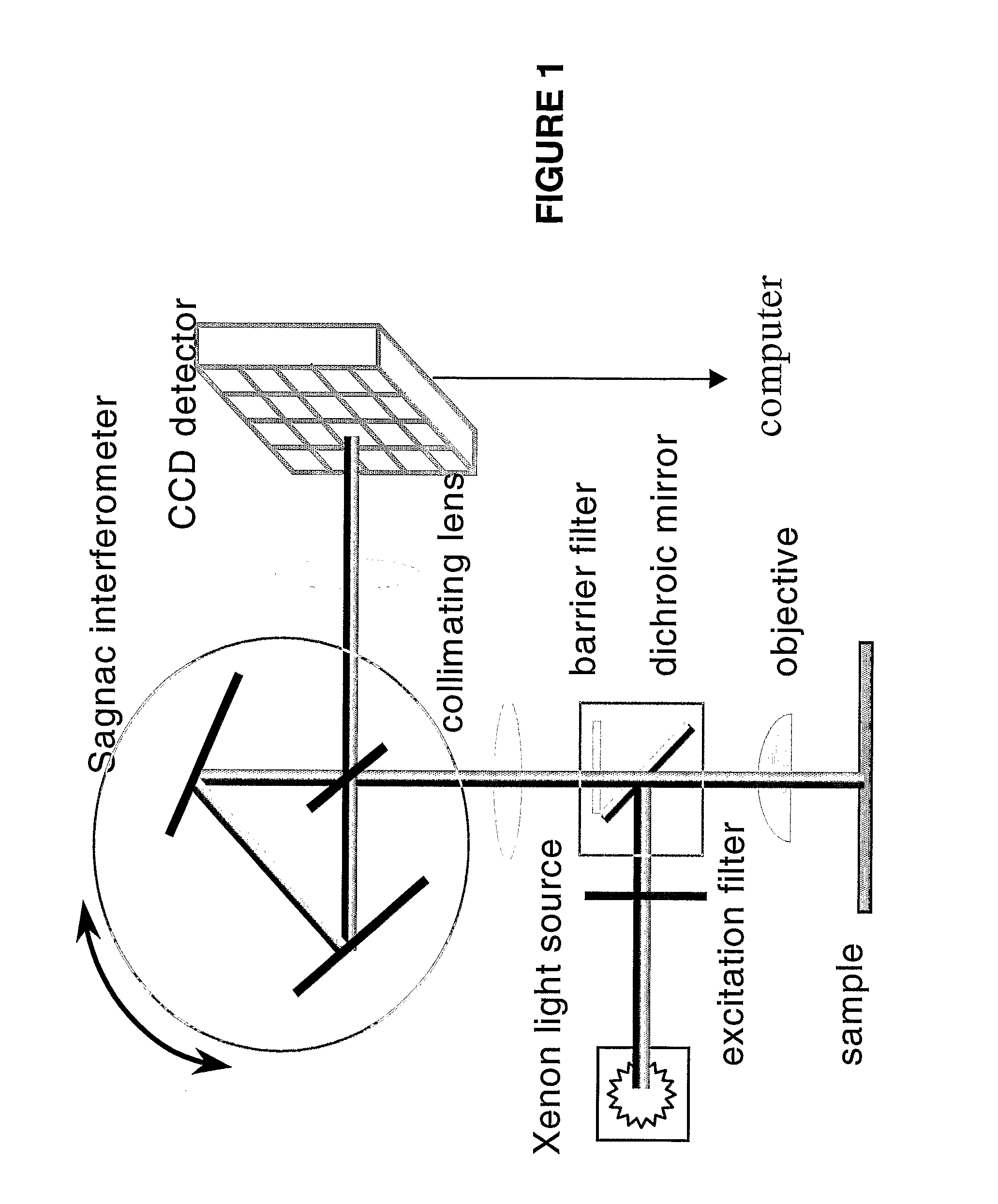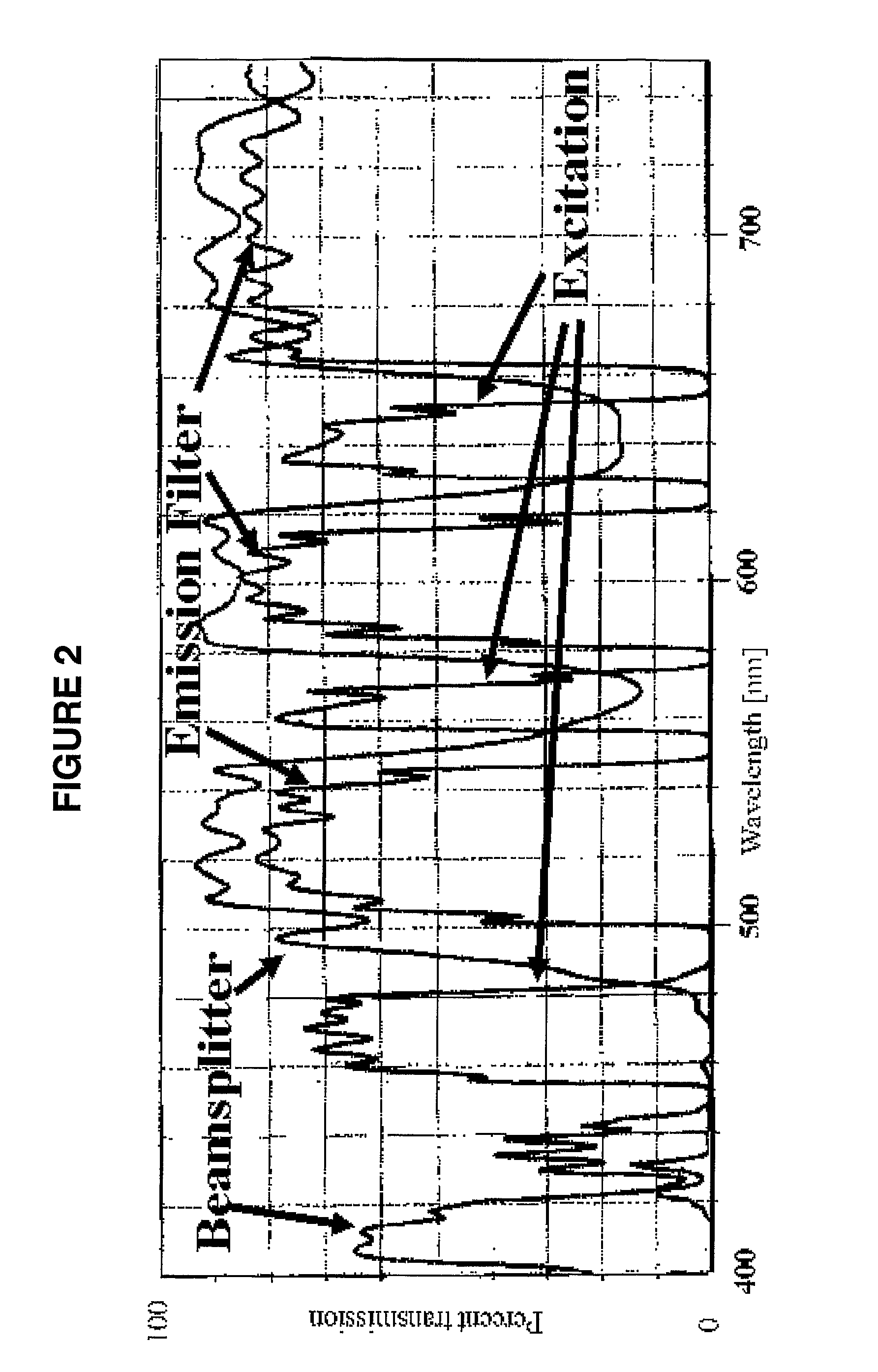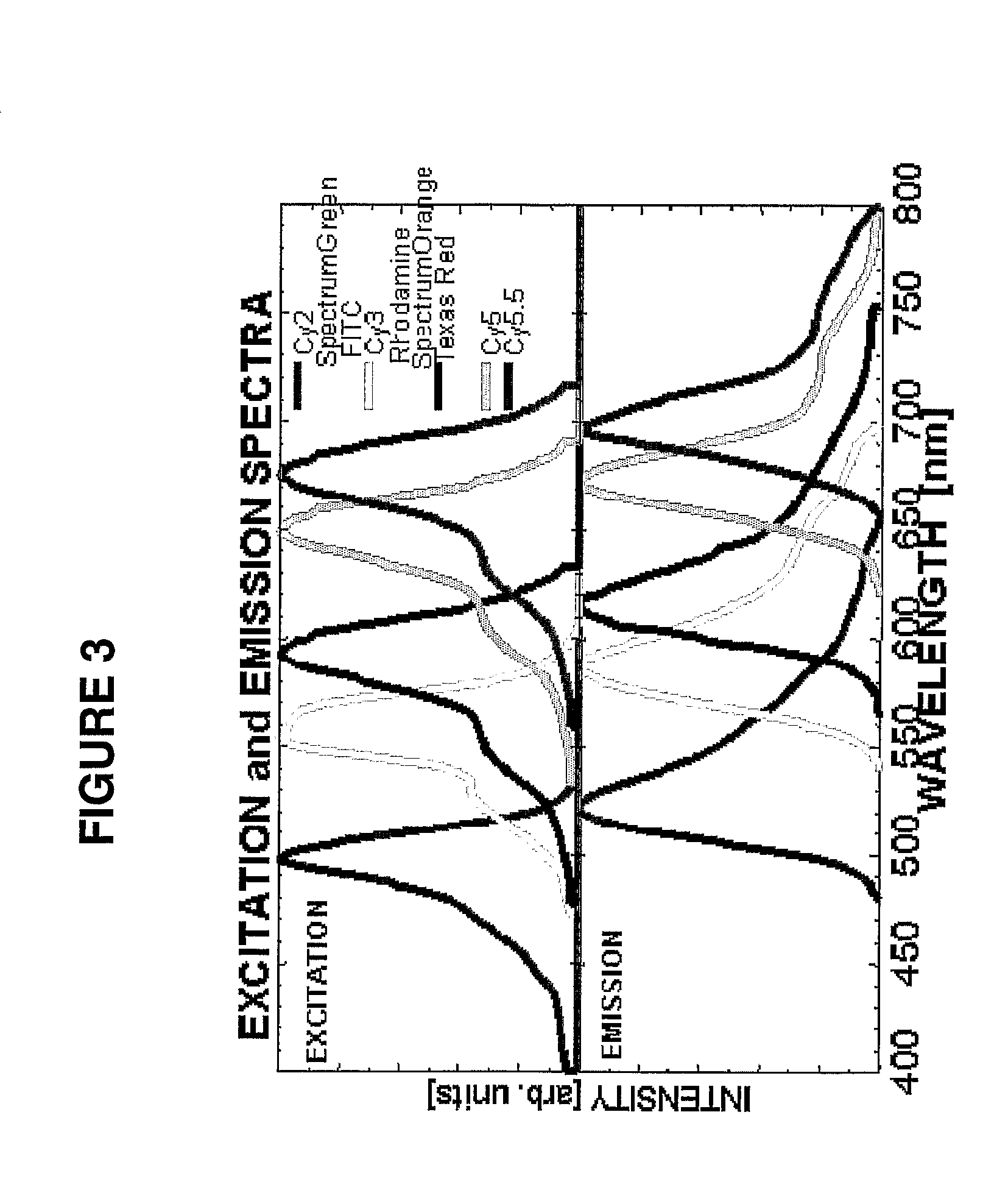Full Karyotype Single Cell Chromosome Analysis
a karyotype and single cell technology, applied in the field of chromosomal analysis, can solve the problems of karyotype analysis being unsuitable for pgd, oocytes are the major cause of age-related implantation failure, and failed fertilization, so as to increase the accessibility of target dna and reduce non-specific binding
- Summary
- Abstract
- Description
- Claims
- Application Information
AI Technical Summary
Benefits of technology
Problems solved by technology
Method used
Image
Examples
example 1
Probe Preparation
[0091]The following example describes procedures to generate chromosome-specific DNA probes suitable for multi-probe / multi-color analysis of first polar bodies (I PBs) and oocytes in the following Examples. Here, we describe the preparation of DNA probes from pulsed field gel electrophoresis (PFGE) purified yeast artificial chromosome (YAC) clones. A novel application of in vitro DNA amplification using the polymerase chain reaction (PCR) to isolate DNA repeats that map to the heterochromatic region of human chromosome 15 is included.
[0092]Purification of human YAC DNA. Since the size of the Saccharomyces cerevisiae genome is about 15 Mbp, only a relatively small fraction of DNA isolated from lytic preparations of whole yeast cell colonies contains the human DNA of interest. Thus, we initially label whole yeast DNA from YAC clones to determine chromosome specificity, cytogenetic map position and chimerism status of YAC clones, before optimizing the DNA probes via is...
example 2
Feasibility of a 8-Probe Set for SIm Technique
[0102]We previously constructed a 10-chromosome probe set for detection of DNA targets most frequently associated with aneuploidy and spontaneous abortions (chromosomes 9, 13, 14, 15, 16, 18, 21, 22, X, and Y). Six fluorochromes (Spectrum Green, FITC, Spectrum Orange, Cy3, Cy5, and Cy5.5) were used to detect DNA probes (Fung et al., 2000) (Table 3).
[0103]A Spectral Imaging system combines fluorescence spectroscopy and digital imaging for the analysis of FISH signals and was used to score hybridization of the probes to chromosomes in interphase cells. The system was comprised of a fluorescence microscope equipped with an interferometer and a charge-coupled device (CCD) camera plus computer software to perform rapid Fourier spectroscopy. Such systems are commercially available from Applied Spectral Imaging, Carlsbad, Calif.
TABLE 4Fluorochrome labeling scheme forchromosome-specific DNA probes*Chromo-SpectrumSpectrumBiotinDigoxigeninsomeGree...
example 3
Using Fish Probes to Detect Frequence of Aneuploidy
[0107]We investigated the frequencies of abnormalities involving either chromosome 1, 16, 18 or 21 in failed-fertilized human oocytes. While abnormalities involving chromosome 16 showed an age-dependant increase, results for the other chromosomes did not show statistically significant differences between the three age groups 39 yrs. Using FISH, we investigated the frequency of aneuploidy and chromatid pre-division for chromosomes 1, 16, 18, and 21 in 273 failed-fertilized oocytes from 95 patients, stratified by age (39 yrs; age range 26.1 to 42.2 yrs). Oocytes were prepared as described (Racowsky C, Kaufman M L, Dermer R A, Homa S T, Gunnala S: Chromosomal analysis of meiotic stages of human oocytes matured in vitro: Benefits of protease treatment before fixation. Fertil Steril 1992; 57:1026-1033).
[0108]Our probes were labeled with four different fluorochromes, so that they could be identified and scored easily ii the fluorescence m...
PUM
| Property | Measurement | Unit |
|---|---|---|
| temperature | aaaaa | aaaaa |
| pH | aaaaa | aaaaa |
| melting point | aaaaa | aaaaa |
Abstract
Description
Claims
Application Information
 Login to View More
Login to View More - R&D
- Intellectual Property
- Life Sciences
- Materials
- Tech Scout
- Unparalleled Data Quality
- Higher Quality Content
- 60% Fewer Hallucinations
Browse by: Latest US Patents, China's latest patents, Technical Efficacy Thesaurus, Application Domain, Technology Topic, Popular Technical Reports.
© 2025 PatSnap. All rights reserved.Legal|Privacy policy|Modern Slavery Act Transparency Statement|Sitemap|About US| Contact US: help@patsnap.com



